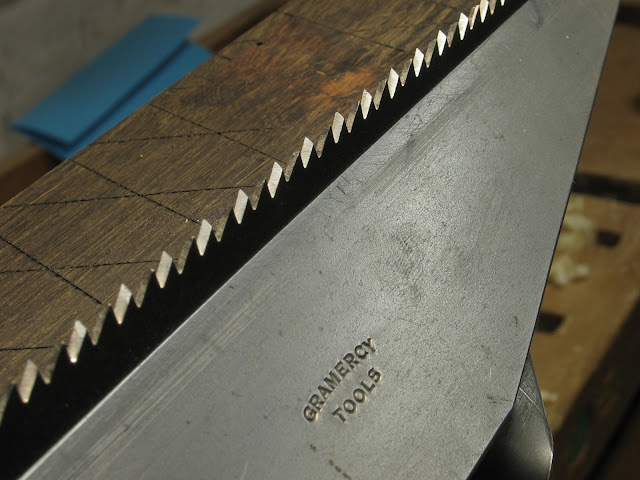But crosscut saw filing is one of the most difficult things, it seems, to communicate to people because ...well, I don't know why. I like to err on teeth that are on the aggressive side with respect to fleam because it doesn't seem to affect the quality of cut, and I try to concentrate on filing the front of the tooth rather than the back, and then touch up as needed - that keeps me from rolling the file and creating one set of teeth that has a total angle of about 70 degrees and another set on the other side of the saw with 50 or something. It also makes it easier to file from toward the direction that a saw is set on both sets of teeth rather than into the tooth where a file really doesn't cut that well unless tilted down.
I'd be willing to bet that the majority of people who file a saw crosscut will never stick it out to learn to do it well. I'd be willing to also bet that many put too much fleam on a set of teeth and end up with a saw that rasps rather than cutting - leaving a user to have to apply pressure to keep the saw in a cut.





